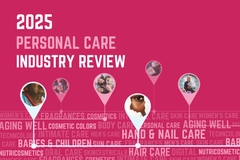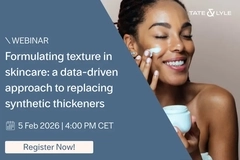Summer sun care: La Roche-Posay shines light on skin safety myths and misinformation

04 Jul 2024 --- Skin care giant La Roche-Posay seeks to dispel myths and misinformation concerning safe summer care practices.
The French cosmetics company tells Personal Care Insights that approximately 5% of Google search queries are health-related (over 425 million searches per day):
“Health is clearly on the agenda for most people, but the amount of information can be overwhelming and often inaccurate. There is so much research and opinion — it is difficult for people to know what to believe.”
According to a company poll commissioned in Britain, sun care remains a “major blind spot for Brits,” with more than a third of 25 to 34-year-olds surveyed believing one cannot get sunburned within the first 30 minutes of being outside.
The poll surveyed 2000 people last month and found the following myths and misconceptions:
- Sunscreen only needed during the summer (22% agree, with men (26%) more likely than women (17%) to see it as seasonal).
- Sun/UV rays cannot damage skin through a window (21% agree, rising to 34% among 25-34 year olds).
- Cannot get sunburn within first 30 minutes of being outside (19% – rising to 29% among Gen Z).
- Wearing sunscreen means no sunburn (26% agree).
- Sunscreen causes blemishes and breakouts (25% agree).
- Sunscreen can be harmful to skin (22% agree).
- Sunburn is unavoidable (23% agree).
 Dr. Fassihi recommends using ample sunscreen since the amount of UVA and UVB protection in a sunscreen is related to how thickly it is applied to the skin.Sun care safety tips
Dr. Fassihi recommends using ample sunscreen since the amount of UVA and UVB protection in a sunscreen is related to how thickly it is applied to the skin.Sun care safety tips
La Roche-Posay says these myths can lead to unnecessary sun damage and long-term impacts on health, with “on average, a person’s risk for melanoma (skin cancer) doubling if they have had more than five sunburns.” Its research also finds that the main influences on health-related attitudes are parents, school, and social media, “so a lot of what we believe stems from the people around us.” It adds that an estimated seven million people admit they are unsure about everything or know nothing about sun care.
La Roche-Posay teamed up with a consultant dermatologist to help clear misconceptions and simplify sun care. Dr Hiva Fassihi says, “Too many people avoid wearing sunscreen because they think it might be harmful to their skin or think it’s healthier to have a tan. There is no evidence of this and plenty of evidence that excess sun exposure harms the skin.”
“La Roche-Posay as a brand is heavily involved with dermatologists to develop and design their sunscreens. They have a huge range of products — something for everyone — from children to adults, tints within their sunscreen, to light and spray formulations. Although invisible, harmful ultraviolet (UV) rays that cause skin cancer and ageing are present all year-round. Sun protection should be applied daily, even in winter, but especially when the sun is out.”
The company has seen a positive shift in sun-safe behavior, with 38% of people polled admitting their attitude toward sun-safety has changed in the last six months. Dr. Fassihi says it is imperative to stay vigilant and follow this advice:
- Seek shade, avoid direct sun exposure 11am-3pm and keep babies and young children out of sun at all times.
- Apply sunscreen 30 minutes before sun exposure, reapply every two hours and after swimming and toweling.
- Apply sunscreen generously since the amount of UVA and UVB protection in a sunscreen is related to how thickly it is applied on skin.
- Remember ears and tops of feet, as studies show these body parts are often missed.
- Wear a wide-brimmed hat, t-shirt and sunglasses with UV protection for optimal sun protection.
The company has seen a positive shift in sun-safe behavior, with 38% of people polled admitting their attitude toward sun-safety has changed in the last six months. Dr. Fassihi says it is imperative to stay vigilant and suggests:
- Seeking shade, avoiding direct sun exposure between 11am and 3pm and keeping babies and young children out of the sun at all times.
- Applying sunscreen 30 minutes before sun exposure, re-applying every two hours and after swimming and toweling.
- Applying sunscreen generously since the amount of UVA and UVB protection in a sunscreen is related to how thickly it is applied on skin.
- Do not forget ears and tops of feet as studies show these body parts are often missed.
- For optimal sun protection, Dr. Hiva advises combining sunscreen with clothing that includes a wide-brimmed hat, t-shirt and sunglasses with UV protection.
 La Roche-Posay warns UVA and UVB rays increase skin cancer risk and that its Anthelios range includes broad spectrum protection suitable for even the most sensitive skin (Image Credit: La Roche-Posay).Targeting skin discoloration
La Roche-Posay warns UVA and UVB rays increase skin cancer risk and that its Anthelios range includes broad spectrum protection suitable for even the most sensitive skin (Image Credit: La Roche-Posay).Targeting skin discoloration
La Roche-Posay warns UVA and UVB rays increase skin cancer risk and that its Anthelios range includes broad spectrum UVA-UVB protection suitable for even the most sensitive skin.
“With Mexoryl400, Anthelios is the most efficient UV filter against the most penetrative UV rays. We aim to make dermatology accessible to people through health tech. 2016 the brand launched the first stretchable skin sensor to monitor UV exposure. In 2019, La Roche-Posay launched Effaclar Spotscan, the first web app co-developed by dermatologists and based on artificial intelligence to analyze acne-prone skin and provide personalized advice and recommendations. Additionally, the brand introduced My Skin Track UV in partnership with Apple, a battery-free wearable sensor and companion app to measure UV, pollution, pollen and humidity exposure and provide personalized advice.”
La-Roche-Posay, owned by L’Oreal, recently launched MelaB3 Serum and UV, featuring L’Oreal’s new multi-patented ingredient, Melasyl. The anti-aging serum promises “to visibly reduce a range of skin discoloration, including sunspots, age spots, post-acne marks, and even the most persistent dark spots, with long-lasting results, while respecting the natural tone of all skin.”
The company says 90% of skin cancers can be attributed to sun damage. Despite widespread understanding of the link between UV exposure and melanoma, third-party research shows that knowledge needs to be translated into action. It points to Melanoma UK research predicting that by 2040, cases will reach nearly half a million (466,914), an increase of 62%. Since UVA damage is also irreversible, La Roche-Posay says people must start taking protective measures today.













